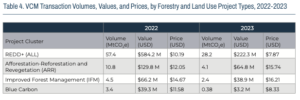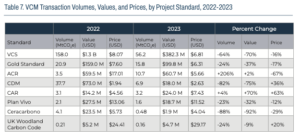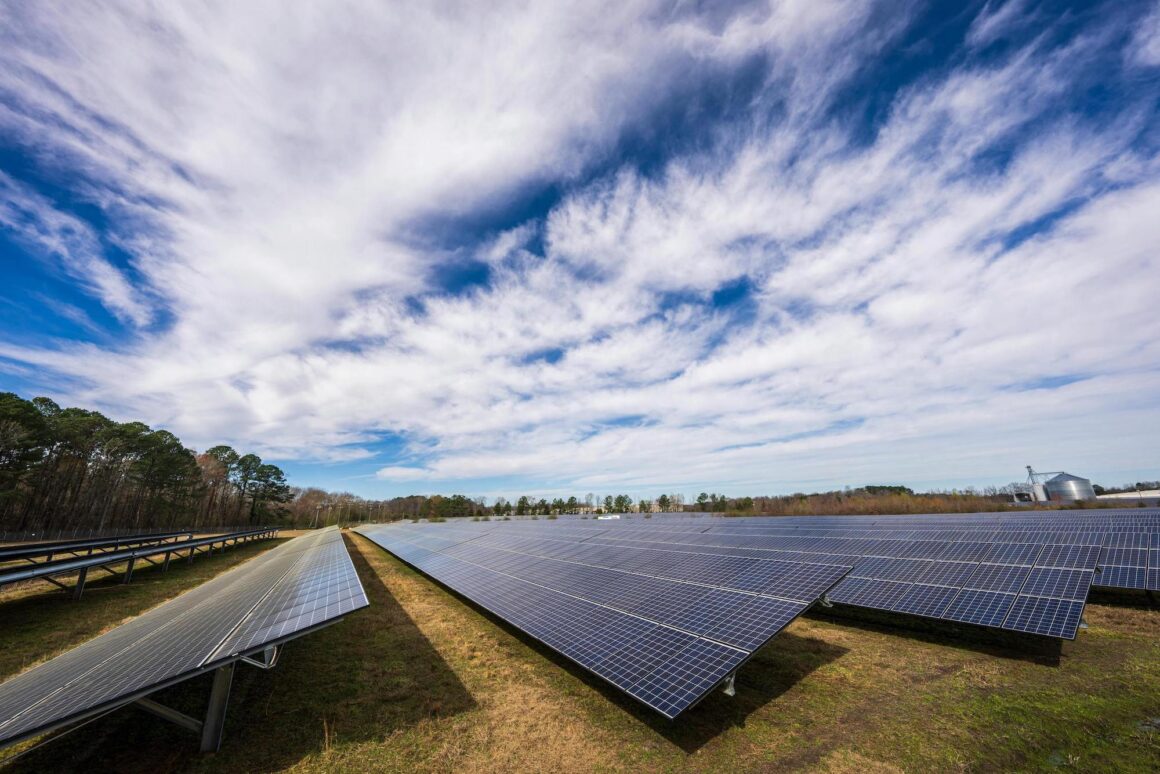In 2023, the volume and value of the Voluntary Carbon Market declined for the second year in a row (from its peak in 2021) by 56% and 61%, respectively, over 2022, reaching a total economic value of $723 million. This is the figure from the annual analysis conducted by Ecosystem Marketplace (EM) an initiative of the nonprofit of Forest Trends.
There has been a significant reduction in nature-based project transactions in 2023, with the percentage decreasing from 46% in 2022 to 37% in 2023. The price of nature-based credits also decreased by 65 percent.
The reduction is especially related to the decrease in the volume and value of REDD+ projects, which are the most significant nature-based type. REDD+ projects lost 62 percent of their value during the year, with transaction volume down 51 percent and price down 23 percent. Impacting this reduction were the various scandals related to the difficulty of quantifying: 1) the actual carbon credits produced, 2) the additionality principle and governance of this type of project to which is added 3) the potential greenwashing by purchasing companies.

This negative communication and the scandals that have emerged have forced certifying bodies such as VERRA-the organization responsible for maintaining the VCS standard and hosting most REDD+ projects-to run for cover by adopting new methodologies that include updated baseline calculations and uncertainty estimation procedures. This new methodology was approved by the ICVCM , the standard-setting body to which certifying bodies such as VERRA must adhere.
VERRA still remained the leading certifier by volume of transactions made based on the nature of the projects (particularly for projects related to categories such as: “agriculture,” “forest and land use,” “household devices and community support”; and “renewable energy”) even though it decreased by 64% in 2023 from the previous year. The constant negative media communication against REDD+ projects has caused a shift of investment from nature-based to tech-based projects resulting in higher volumes and lower average credit prices of those standards such as CDM, CAR or UK Woodland Carbon Code that certify such projects.

The Report’s data suggest a context that thus highlights a twofold aspect: on the one hand the potential of this market, and on the other hand the importance of introducing innovative and more transparent solutions to make carbon credit trading more accessible and reliable.
In particular, there is a growing bifurcation of the market between buyers seeking pure carbon removal projects and those engaged in projects that, in addition to the reduction in emissions, offer social and environmental co-benefits (in line with so-called sustainability credits) measurable with the Sustainable Development Goals (SDGs). In fact, in 2023 the share of transactions from projects with one or more SDG certifications grew to 26% up from 18% in 2022.

